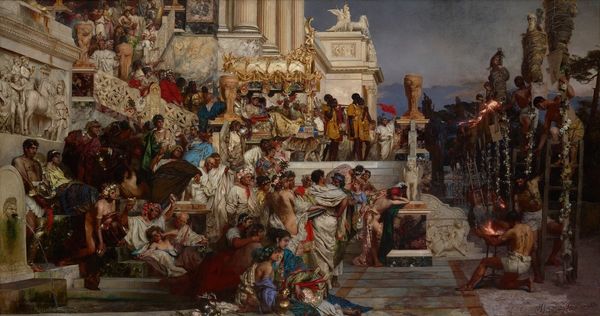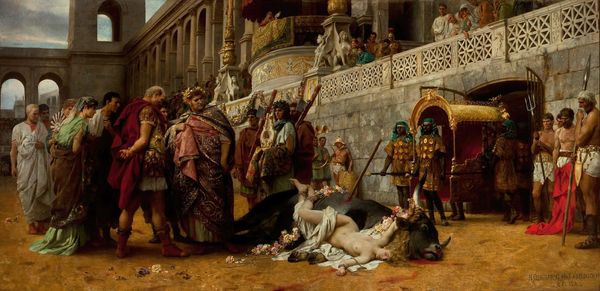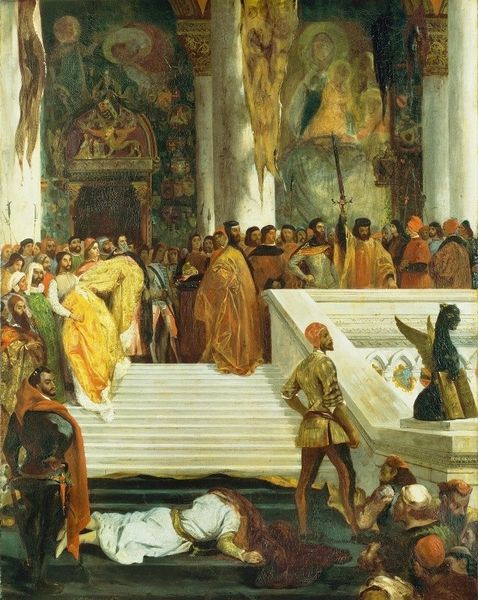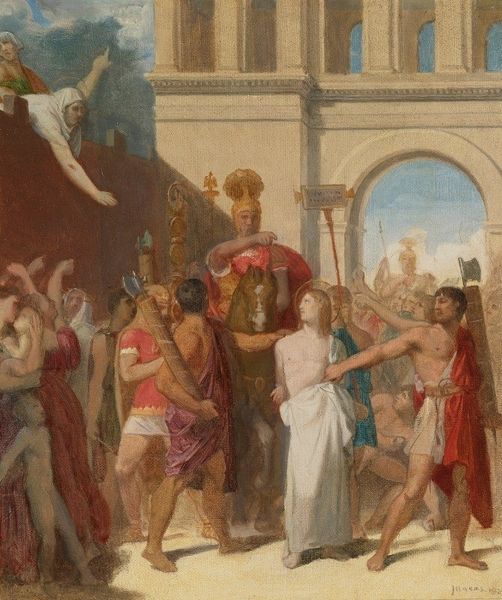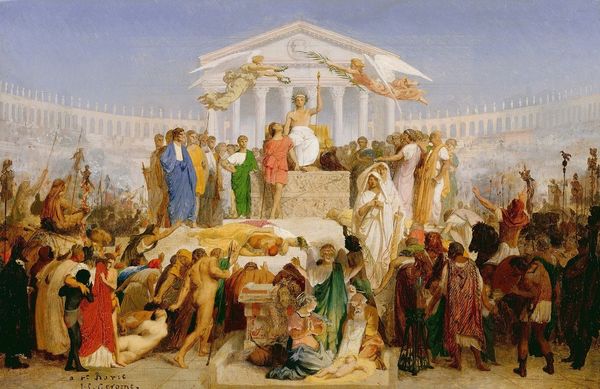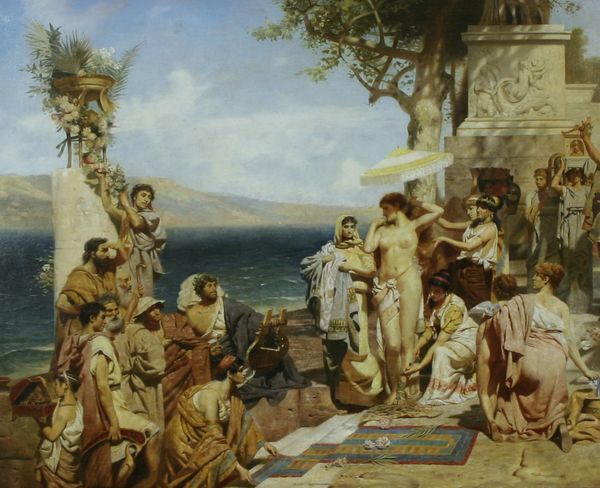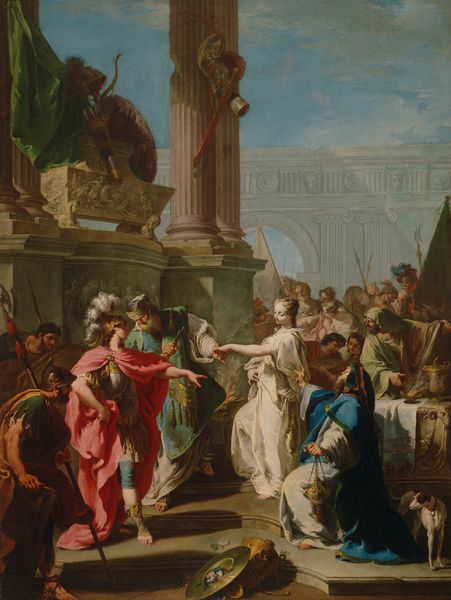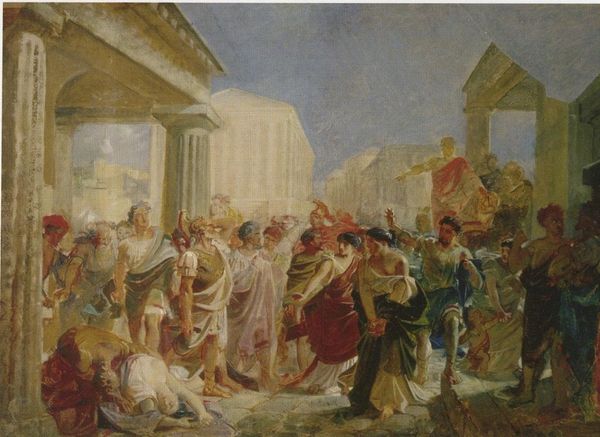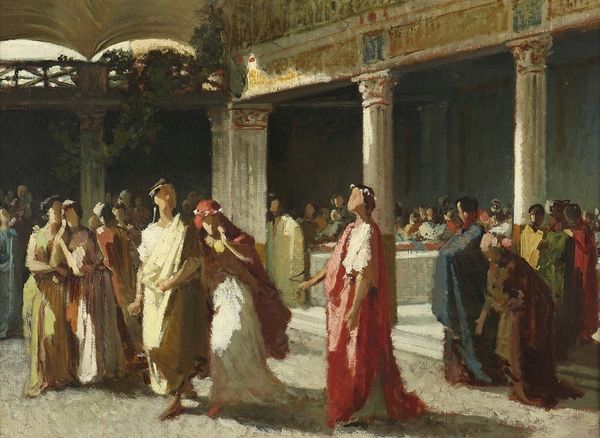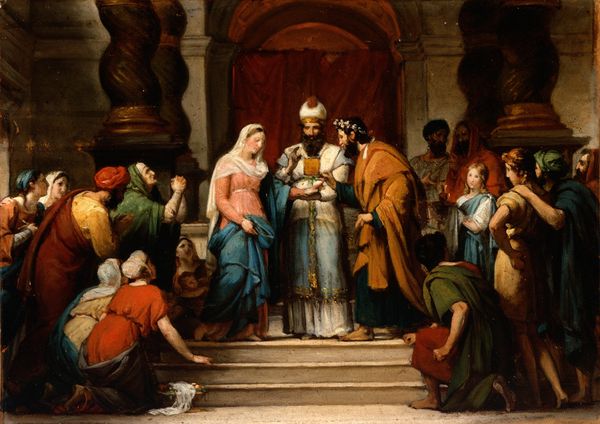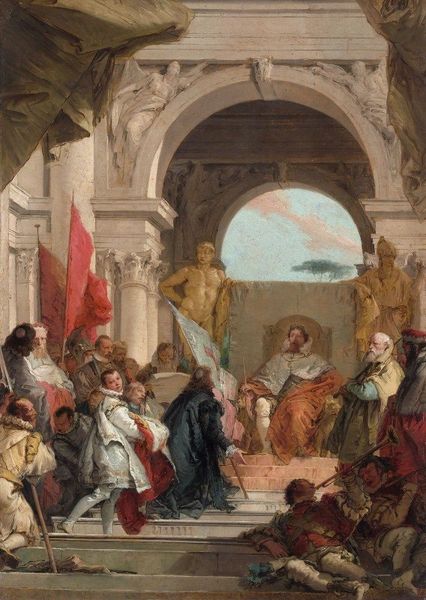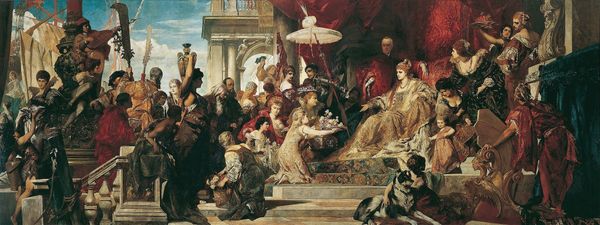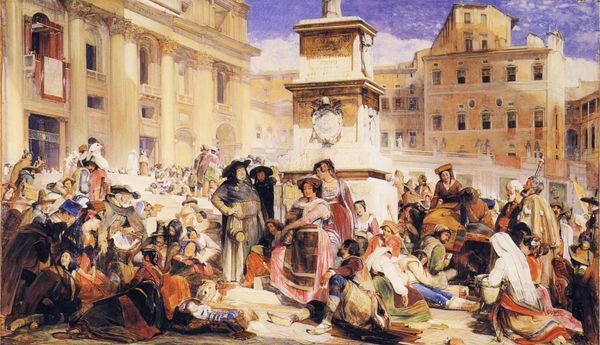
Nero's Torches (Leading Light of Christianity) 1876
0:00
0:00
oil-paint
#
narrative-art
#
oil-paint
#
figuration
#
romanesque
#
oil painting
#
history-painting
#
academic-art
Dimensions: 305 x 704 cm
Copyright: Public domain
Curator: What a scene. My eyes dart to the flaring torches first; they dominate the right side of the canvas. The overall impression is dramatic, with that stark contrast of light and shadow. Editor: Indeed, it's quite a production. What exactly are we looking at? Curator: This is "Nero's Torches (Leading Light of Christianity)," painted in 1876 by Henryk Siemiradzki. It's an oil painting residing at the National Museum in Krakow. It depicts Nero's persecution of Christians in ancient Rome. Editor: Ah, I see it now. The composition clearly divides the opulence of Nero's court from the gruesome fate of the Christians being burned. It's interesting how Siemiradzki juxtaposes these contrasting spaces and experiences. The palette too– those muted earth tones set against the stark flames. What can we say about this work within its historical context? Curator: This painting reflects a time of intense interest in classical antiquity within academic art. Siemiradzki masterfully constructs the scene using historical research, evident in the architecture and costuming, adhering to Academic artistic conventions of that time. He's making a commentary on power and its abuse against a marginalized group. You could almost say the painting is making a symbolic claim about Poland's fate through a veiled commentary on subjugation by foreign empires. Editor: Right, it serves as a critique. Notice the expressions on the faces around Nero – that bored indifference contrasts vividly with the visible suffering on the right. Siemiradzki positions us to question authority, pushing against apathy and celebrating early martyrs for a cause. He’s clearly employing the tropes of Romanticism but channeling it into historical narrative. The brushwork reinforces the sense of high drama with the almost photographic detail drawing our eye. Curator: Indeed. It functions as both spectacle and morality tale, which gives us insight into the ways art can both reflect and shape historical consciousness, by imbuing this ancient history with the flavor of then-modern sociopolitical sensibilities. Editor: Looking closely, it's clear how expertly Siemiradzki crafts this powerful visual narrative using form, color, and subject. Curator: Precisely, the semiotics of power and persecution are meticulously layered in every element of the painting.
Comments
No comments
Be the first to comment and join the conversation on the ultimate creative platform.
